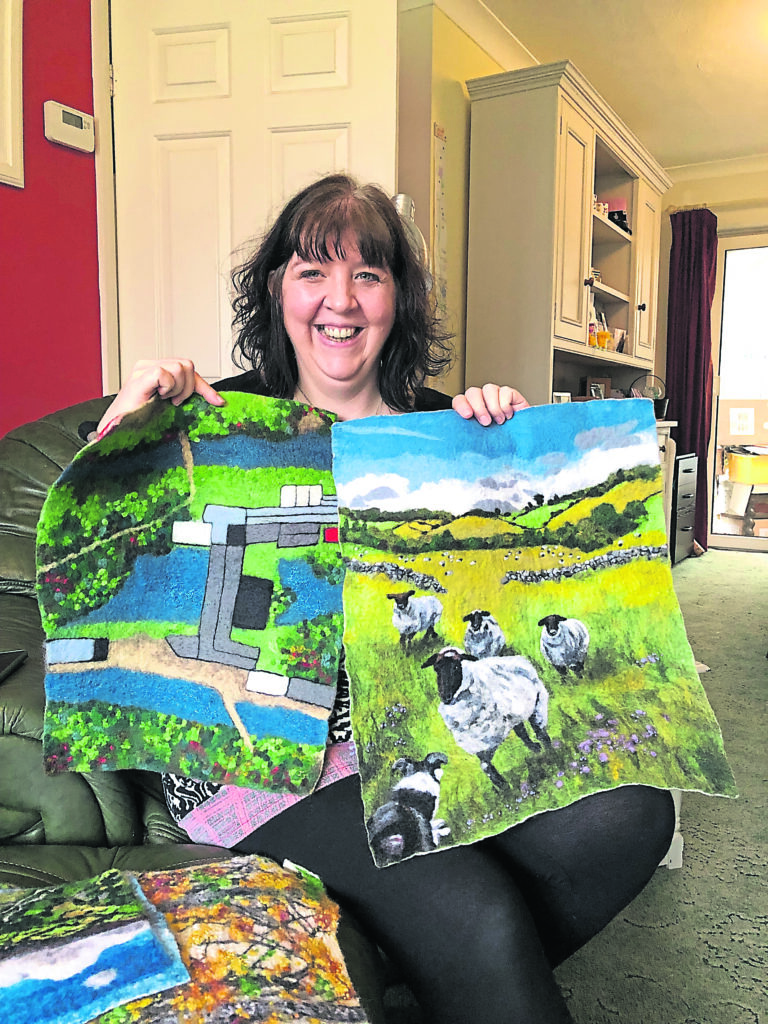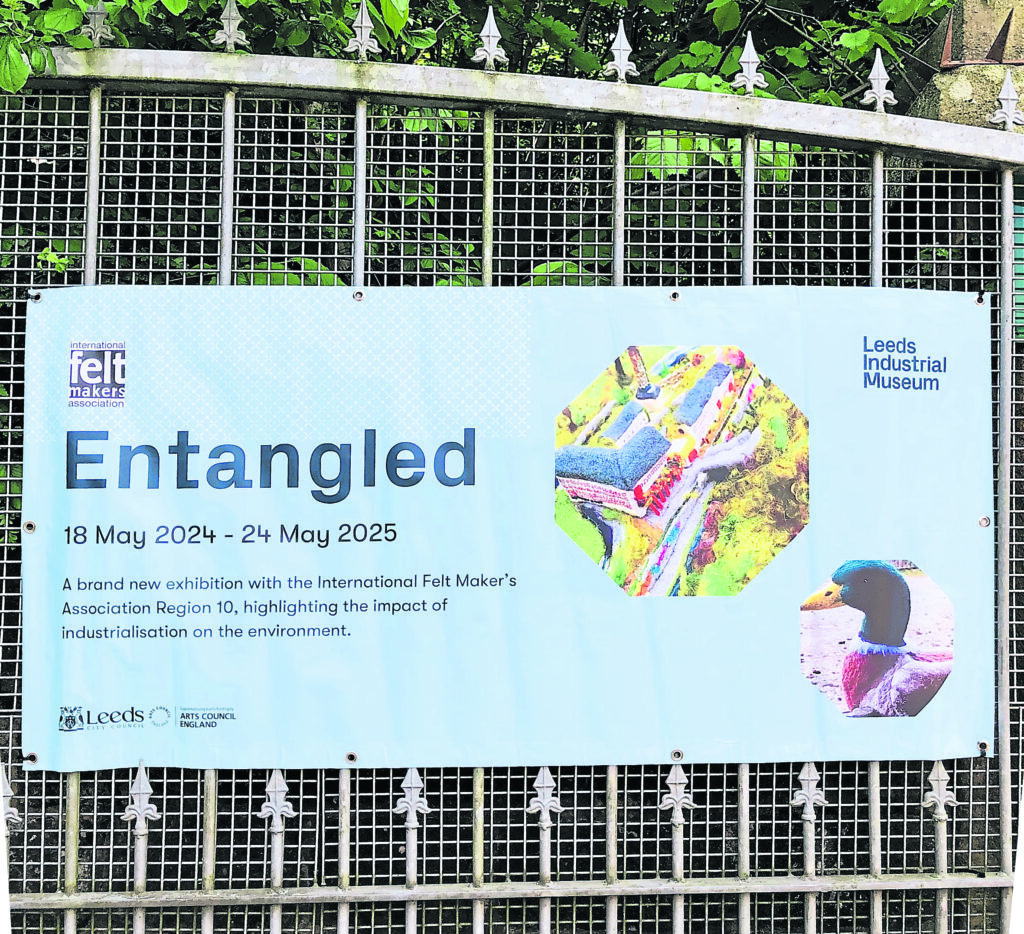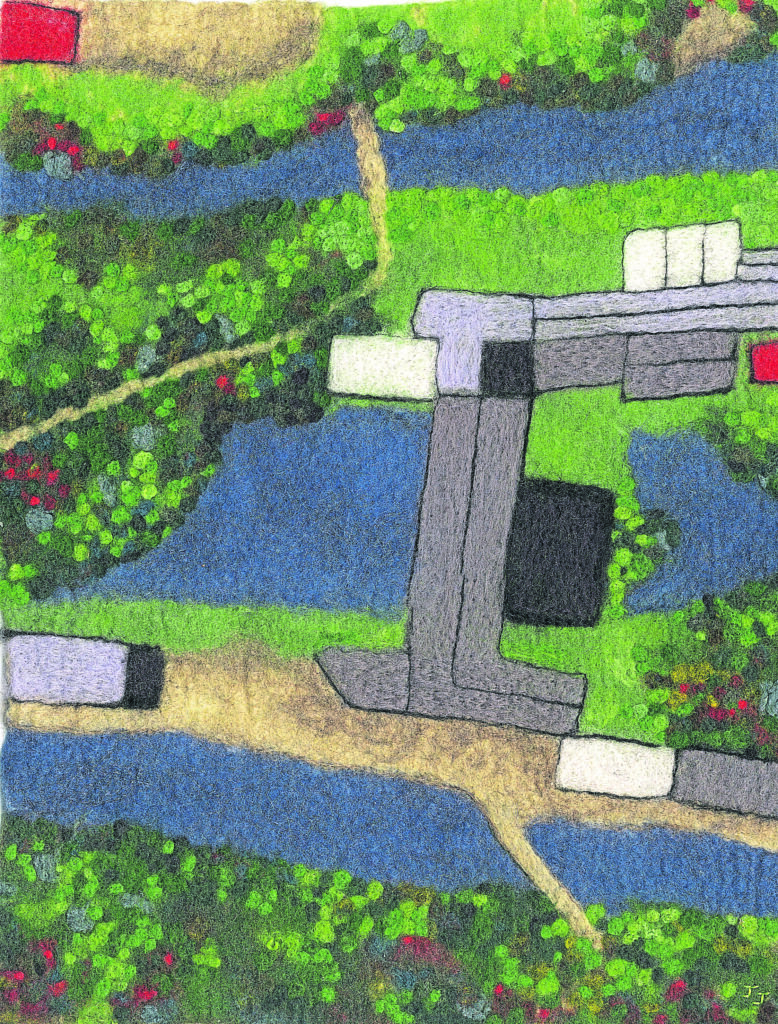The history of the Leeds & Liverpool Canal is the focus of West Yorkshire felt artist Janine Jacques’ latest exhibition. Sally Clifford finds out more.
BUILT 200 years ago, the Leeds & Liverpool Canal was one of the most important waterway trade routes through the region. Coal and textiles were among the important cargo carried along this 127-mile stretch linking the cities of Leeds and Liverpool. The canal’s contribution to moving raw materials manufactured in the mills has provided a fascinating focus for Yorkshire felt artist, Janine Jacques.

Janine is one of 25 artists contributing their creative feltworks to Entangled: An exhibition by the International Feltmakers Association, Region 10, portraying the impact of industry on the natural environment, which runs until May 2025 at Leeds Industrial Museum, Armley Mills, Leeds.
Dating back to the 16th century, Armley Mills was a corn and fulling mill until the 18th century when it was purchased and rebuilt by Colonel Thomas Lloyd, becoming one of the largest woollen mills in the world. Its waterside location gave the mill direct access to the once-busy waterway trade route along which many of the area’s prominent mills were built. Using maps provided by Leeds Industrial Museum, Janine interpreted the aerial view of the mill and the canal into her felt artwork.
“The exhibition artwork came out of my research into Armley Mills. On finding out it was the largest woollen mill in 1805 and how Leeds thrived due to the woollen industry, I went on to research the canal and discovered it was built partly due to the woollen industry and the need to enable a quicker way to transport the woollen goods and other goods abroad,” explains Janine.

She says through her research, she discovered the canal originates from a proposal in 1765 to construct a canal from Preston to Leeds to carry woollen goods from Leeds and Bradford and limestone from Skipton.
A new dimension
The re-creation of the buildings standing beside the canal brought a new dimension to Janine’s felting work, which is a complex and intricate process beginning with an oil pastel of her design.
Janine explains manipulating the oil pastels with her fingers enables her to literally get a feel for her work which she translates into felt.
For the feltwork Janine explains that pre-felt, used to design the image, can be pre-bought or made from scratch in a process which involves carding different shades of wool to incorporate the colours. Wet felting involves covering the completed design with tuille-like material, wetting it with warm soapy water, rubbing it with a special stone to bind it together, rolling and shrinking it.

Once complete and dry, Janine adds further detail by needle-felting the areas she wants to enhance. For the aerial view of the canal and buildings, Janine researched the Dutch artist, Piet Mondrian, known for his abstract work in squares and rectangles.
“I did about three different oil versions of it. It went through a bit of a process. I did the first oil pastel and the rest of the buildings are squares or rectangles and it reminded me of Piet Mondrian – his work is squares and colour and I started building around that.
“I wanted the eye to move around the pieces.”
A natural affinity for landscapes
Landscapes have always been a natural draw for Janine, a graduate in fine art, painting and drawing. She grew up on the family’s arable farm in Lincolnshire and memories of farm life, and the important part sheep play in the textile industry, are encapsulated in her other creative contribution to the exhibition.
Sootica, Cindy and her twins May and Wilma, her four woolly friends from her childhood flock, have also been transformed into felt works of art, their presence knitting together perfectly Janine’s past with the present.
Says Janine: “With both my artworks I wanted them to be positive images of how industry has impacted on nature rather than negative.

“I’ve also enjoyed reading up about Armley Mills and the canal. It was a nice project to work on.
Aleks Fagelman, assistant community curator, Leeds Industrial Museum and Thwaites Watermill, says Leeds Industrial Museum is proud of the strong relationship it has had with the IFA for many years since the first collaborative exhibition in 2018.
“Janine’s work is based on an original plan of the museum and I think it is so fantastic to see the museum in different lights.”
Aleks says the Leeds & Liverpool Canal is an essential part of the story of Armley Mills as it directly led to the mill’s expansion and, it is also said, that the first wool from Australia was brought along the Leeds & Liverpool Canal and processed at Armley Mills.
“I think Janine’s work is a lovely example of how different people look at the museum and a great representation of our history,” says Aleks.
For more information visit www.janinejacques.co.uk or search janinejacquesart on Facebook and Instagram. To find out more about Leeds Industrial Museum visit: www.museumsandgalleries.leeds.gov.uk





